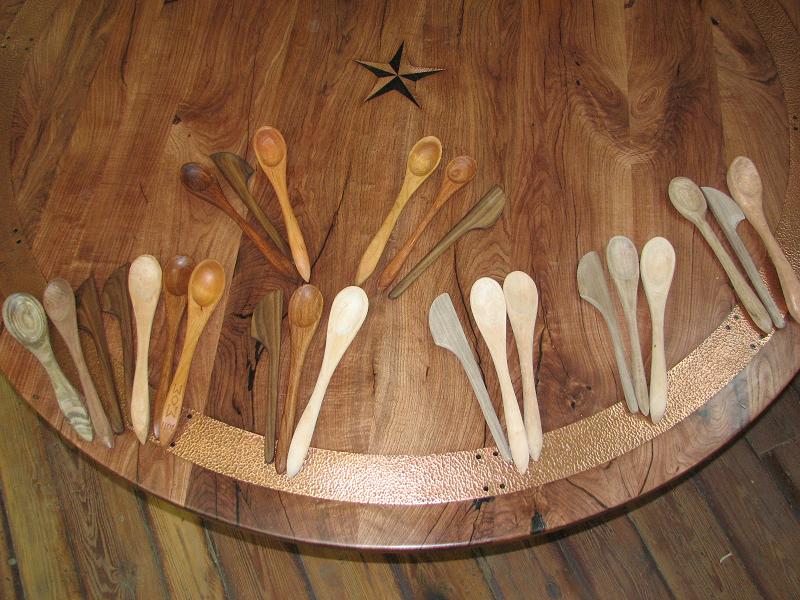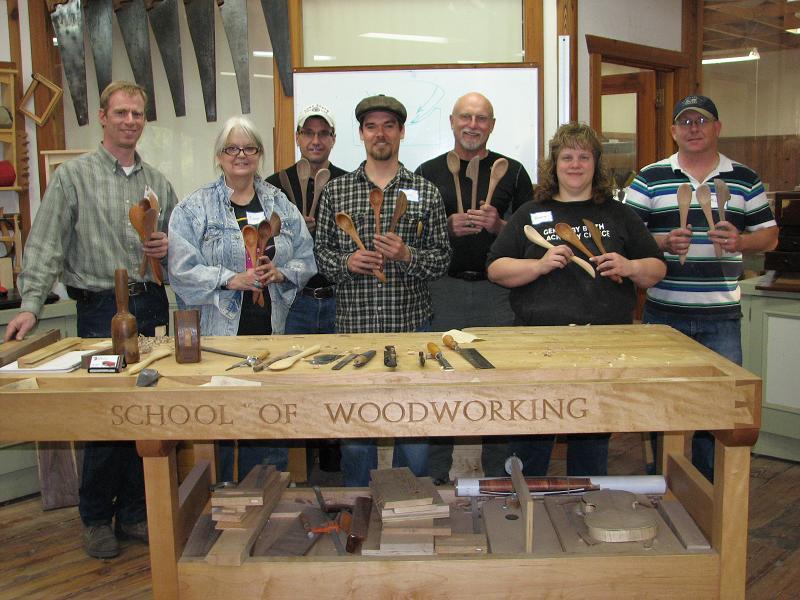Our first spoon carving class opened up Saturday with 6 students and what a great day! This is just one of the many new classes that we are offering this year.
I started out by teaching tool sharpening. This is often overlooked when working with hand tools. Folks often wonder why they are not getting the smooth cut they are looking for and while there are often several things that could contribute to this problem, the first thing I check is the sharpness of the blade. Then I check to see how far the blade is protruding from the tool. After we were all sharpened up we moved right into working with the grain direction, this is a subject that can easily be overlooked.
We want to look at which way the grain is going, and not only that, but in a curve, such as a spoon the grain is often changing many times. For example when you are carving a curve you want to work downhill with the tool. (See the picture below) Think of the grain as a bunch of little straws or hairs bunched together, when you stroke the hairs you want to work with the hairs, not against them, so as not to cause them to lift.  After time spent getting used to the spokeshave, we shaped a spoon in pine, using the stop-cut method and a chisel to shape the outline. Then the shape was finished up with the spokeshave.
After time spent getting used to the spokeshave, we shaped a spoon in pine, using the stop-cut method and a chisel to shape the outline. Then the shape was finished up with the spokeshave.
We went on to shaping a black walnut spatula. All the students then made a spoon out of mesquite, which is a native Texas wood. Mesquite is a great wood to carve and it scrapes wonderfully. The shape of the spoon was pre-cut on the band-saw and then the bowl was shaped with a gouge. I have found that the Swiss made gouge, sweep 7 and 20mm wide works quite well. The rest is shaped with a spokeshave and finished with a scraper.
Below are a few pictures of the class in progress!
For the last project, everyone made a ladle. After using the gouge to shape the bowl, I then introduced the drawknife to shape the outside shape and curves of the ladle. This was finished up with the spokeshave and scraper. After sanding and rubbing out with fine steel wool, we finished by rubbing down with walnut oil.
I even showed them how to make a spoon from a walnut log, using a hatchet, drawknife, spokeshave and scraper; I will talk about this in another post!
Here are the finished spoons after a day’s work!
Everyone left quite happy and fulfilled after a day’s worth of working with their hands. To register for the next spoon carving class, click the link SPOON CARVING CLASS


This class was great!! Thank you, Frank, for all the excellent instruction.
I would recommend this class to anyone – you can have fun shaping wood and end up with some fine cooking utensils, too!